Why Piano Adventures?
First and foremost, Piano Adventures is student-centred. Teachers will find the appealing variety of sounds and styles educates and motivates. The technique exercises and pianistic repertoire of the course lay the foundation for expressive playing. And the pedagogy of Piano Adventures, which so effectively combines the strengths of intervallic, multi-key, and Middle C approaches, has set an exciting musical standard for today’s piano teacher.
Approach to Reading
Many teachers have experienced some frustration with students who have not mastered note reading. Piano Adventures has established a new model for piano methods with its composite approach to note reading. The ability to read music is developed by effectively integrating three essential skills: 1) discrete note recognition; 2) intervallic reading; and 3) a multi-key understanding. These are carefully sequenced and reinforced to build successful readers. The Piano Adventures approach to reading has several important benefits:
Prevents the student from equating a particular note to a particular finger.
Teaches the precise relationship between a note written on the staff and its matching key on the piano.
Allows for a free and balanced drop of the arm and hand into the finger for a full, round tone.
Avoids the overuse of two thumbs on Middle C. Reduces the student’s dependence on fixed hand positions.
The early levels of Piano Adventures offer a valuable set-up for each piece. The student is required to identify the first note for each hand, write the note name in the blank provided, and then place the hand correctly on the keys according to the finger number given. The student learns the fundamental procedure of music reading and becomes self-sufficient in this process.
Concurrent with individual note reading, the student is required to read by the contour of the musical line — step or skip, up or down. This intervallic reading approach promotes fluency, recognition of melodic patterns, and understanding of the musical line.
At Level 2A, with the student firmly grounded in note reading, a multi-key approach is presented. Here the student learns the major and minor 5-finger patterns in C, G, D, and A. Not so many as to overwhelm the student’s reading or to become tedious, but enough to grasp transposition and basic chord recognition. At Level 2B, the complete major scale is introduced along with key signatures and primary chords (I, IV, and V7) in the keys of C, G, and F.
Approach to Pianism
Pianistic pieces and songs with fanciful lyrics are one of the hallmarks of the Fabers’ material. All of the music in Piano Adventures has been specifically composed to build a strong technical and artistic approach to playing.
Starting from Primer, well-written pieces develop fluent piano technique. Even beginning songs are written to encourage freedom at the keyboard, to promote a relaxed wrist, and to introduce gestures that carry the hand across the full range of the instrument. The method presents essential pianistic gestures called Technique Secrets — from Wrist Float-offs to a Light Hand Bounce to Alignment for beautiful scale playing. Easy and effective use of the damper pedal opens up the rich sonority of the instrument and promotes active listening.
Imagination and Artistry
The lyrics, art, and musical imagination embedded in Piano Adventures make it keenly attractive to children. A method can only be as good as its music and the imaginative music of Piano Adventures shines.
In addition, the Technique & Performance Books present essential Technique Secrets, exercises, and etudes that lead to expressive Performance Pieces. This structured path invites the teacher to bring his/her own imagination and artistry into the lesson.
Piano Adventures offers short Discovery or Creative questions with each piece. These foster “habits” of analysis and creative exploration.
Student Appeal
Students are attracted to the wide variety of sounds and moods of the music in Piano Adventures. The pacing works. Years of painstaking pilot testing have ensured a method that has wide student appeal. Literally over one hundred pieces that did not “pass the test” of student enthusiasm were discarded and replaced, until the method met the standards and musical tastes of both piano student and teacher. The appeal of the music and carefully structured pedagogy have been confirmed by thousands of letters and comments from teachers and students worldwide.
3
PRIMER LEVEL Synergy from the Beginning
Lesson & Theory Book
Each level of Piano Adventures All-in-Two Edition consists of two books: the Lesson & Theory Book and the Technique & Performance Book. The Primer Level Lesson & Theory Book presents a wide range of musical styles to introduce the keyboard, basic note values, note names, and recognition of steps and skips. Students can play along with teacher duets at their lesson.


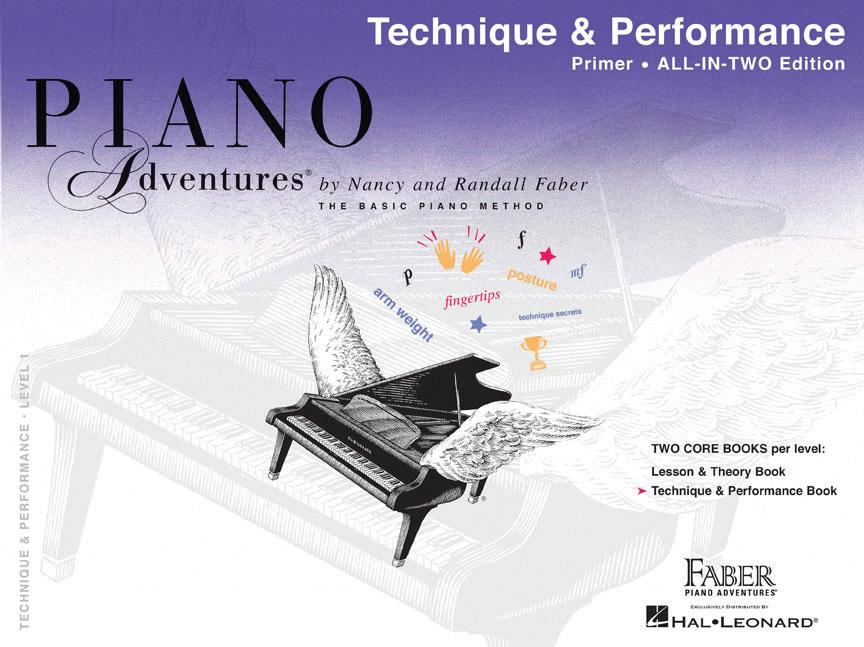


Lesson & Theory Book Book with CD HL 00119898 HL 00119899
Technique & Performance Book
for play-along fun, see back cover
The Technique & Performance Book develops technical skill and artistry. Five “Technique Secrets” open the book, followed by effective, short exercises. Each unit progresses from etudes to an engaging Performance Piece, where these techniques become tools for musical expression.
Technique & Performance Book
HL 00119900
Primer Level Concepts
Hand position and finger numbers
Note values ( Œ , Ó , Ó ˘ , „ )
key names: A B C D E F G Steps and skips on the staff
Stave notes: Bass C to Treble G
®√ and ´´√ time signatures
The crotchet rest
The tie
Explore PreTime® Piano for Primer Level motivation and fun!

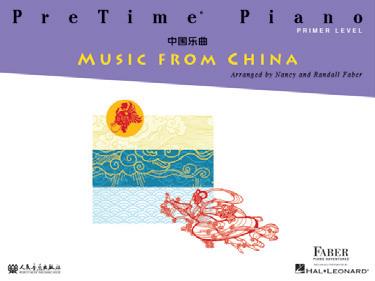
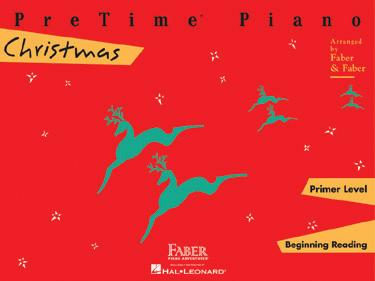


See more exciting PreTime choices on pages 14-15!

PRIMER LEVEL PIANO ADVENTURES
Rock ’n Roll HL 00420198 Popular HL 00420151 Jazz & Blues HL 00420156 Classics HL 00420126 Kids’ Songs HL 00420141 Christmas HL 00420124 Disney HL 00275426 Music from China HL 00294516 New!
4
Inside the Lesson & Theory Book…
Frogs on Logs
Students are able to play simple songs right from the start using pre-reading notation. As notes are introduced on the staff, fingerings are varied for solid notereading skill and fine technique.
Silly
Asleep on the Lily Pads
C 5-Finger Scale Improvisation
1. Place your R.H. on a high C 5-finger scale 2. Listen to the mood of the Teacher Duet.
When you are ready, improvise a sleepy “frog lullaby.”
Integrated Theory pages tightly parallel the artwork, subject, and pedagogy of the Lesson pages. An abundance of teacher duets model rhythmic accuracy while adding fun and sophistication.
Inside the Technique & Performance Book…
1.
Five Secrets for Piano Technique
To end, s-l-o-w down and stop on C. It’s midnight. The frogs are asleep on the lily pads...
Students learn essential technical gestures through creative imagery in five “Technique Secrets.” For example, students can readily correct their hand position when they are reminded to Raise the Roof!
The vibrant Performance Pieces bring it all together, written specifically to bring out maximum expression in the student’s playing.
The “Technique Secrets” are used as warm-ups for the many patterned exercises throughout the book.
50 ? 4 4 R.H. L.H. œ œ œ œ P 2 Œ œ œ # # œ œ ‰ j œ œ œ œ œ Œ 2 3 4 œ œ œ œ Œ œ œ # œ œ ‰ j œ œ œ œ œ Œ 5 Œ œ Œ œ œ Œ œ Œ Œ œ œ Œ œ œ ‰ j œ # œ œ œ œ œ Œ œ œ w w Œ œ # œ ˙ & ? 4 4 4 4 œ œ œ œ Four - teen lit - tle (prepare L.H.) Cheerfully 2 on C F 3 w frogs 2 œ œ œ œ sat up - on a 2 to D hop w log. & ? 5 œ œ œ œ One by one they 2 hop to E œ œ œ œ jumped in - to the 4 œ œ œ œ lit - tle wa - ter1 fall! w 1 on ? CREATIVE Play this piece with your L.H. in your lap. For the final bar do a L.H. “bullfrog leap” and play a VERY LOW C as a surprise. Teacher Duet: (Student plays as written) Hopping Hand Position: This piece uses a hand shift to “hop up” the keys. Hint: A circled finger number will help you see a hand shift. To prepare: Play C with R.H. finger 2. Hop to D with finger 2. Hop to E with finger 2.
CD 48-49 with improv ?Tech & Perf pages 29, 30-31 6 2. The second secret is ROUND HAND SHAPE Raise the Roof • Rest your right hand (R.H.) lightly on the white keys in a loose fist. In s-l-o-w motion, let your fingers open to “raise the roof of your house.” Your wrist will rise slightly as your fingertips and thumb hold your “house” in position. Repeat with the left hand (L.H.). Then try hands together (H.T.). Learn these five “technique secrets” with your teacher. Use them to
begin your daily practice.
•
Centre
body
the middle of the keyboard. Check your distance from the keyboard by putting your arms straight in front of you with relaxed fists. Your knuckles should touch the lid. Adjust your stool as needed. Now place your hands in your lap. Take a deep breath and let it out. check your distance good posture ?Lesson page 4 (Sitting at the Piano), page 5 (Making a Round Hand Shape) 51 THEORY & 4 4
˙ œ œ ˙ œ œ œ œ œ ˙ œ & 4 4 ˙ ˙ œ œ œ œ ˙ œ ˙ ˙
examples below are in time. Draw an X through each INCORRECT bar. Hint: There may be too many or too few counts.
The first secret is GOOD POSTURE The “I’m Great” Pose
Sit straight and tall on the front part of the stool.
your
to
w
The
3.
4.
Teacher
? 4 4 R.H. L.H. œ 1 œ œ F-p epeat 5 œ œ œ ˙ œ œ œ ! œ œ œ ˙ œ œ œ ! F œ w ˙ œ ! π œ ˙ ! ˙ ! œ œ œ ! ! F œ œ œ ˙ œ œ œ ˙ ˙ ˙˙ ˙ p ˙˙ ˙ w w ! ! π w w To improvise means to create “on the spot.”
Duet: (Student plays high on the keyboard)
Frog Rhythms Finding Incorrect Rhythms 32 UNIT 6 ?œœœœœ ? 4 4 œ œ œ œ Let s go ride the Lively pattern on C F 1 on ? 2 1 2 œ œ ˙ car ou sel. 3 2 1 etc. œ œ œ œ move to B 1 2 pattern on B œ œ ˙ -? 5 œ œ œ œ move to A 1 2 œ œ ˙ œ œ œ œ move to G 1 2 œ œ ˙ Carousel Ride (for L.H. alone) 1. Notice this pattern begins and ends on the thumb. 2. When you can play this exercise easily, play it with eyes closed. & ? & ? 7 & 4 4 R.H. œ œ œ Œ Ó P 5 1 2 (student on C) œ œ œ œ œ œ ˙ ˙ ˙ 1 3 5 œ œ œ Œ Ó (student on B) œ œ œ œ œ œ ˙ ˙ ˙ 5 œ œ œ Œ Ó (on A) œ œ œ œ œ œ ˙ ˙ ˙ (on G) œ œ œ Œ Ó œ œ œ œ œ œ ˙ ˙ ˙ & 9 œ œ œ Œ (on F) œ œ œ œ œ œ ˙ ˙ ˙ (on E) œ œ œ Œ œ œ œ œ œ œ ˙ ˙ ˙ 13 œ œ œ Œ (on D) œ œ œ œ ˙˙ 1 2 œ œ œ Œ (on C) œ œ œ œ œ œ ˙ ˙ ˙ Teacher Duet: (Student plays as written) Keep the pattern going! Technique Secret: correct thumb position (page 7) Do a L.H. Thumb Perch as a daily warm-up. Lesson page 56 (Carnival) Continue the 1 - 2 - 1 - 2 - 3 - 2 - 1 pattern DOWN beginning on F, E, D, and C. 48 Reading Check: Circle each skip in this piece. Hint: There are 8. & ? 4 4 4 4 Dignified march ˙ f 5 on __? ˙ w w 1 on __? 5 on __? ˙ œ w w œ œ œ œ w w ˙ ˙ 1 & ? 5 ˙ 3 ˙ ˙ ˙ œ œ œ œ w ? 4 4 R.H. L.H. ˙ ˙ ˙ ˙ ˙ ˙ ˙ ˙ F ! ˙ ˙ œ ˙ ˙ 2 ! ! ˙ ˙ ˙ ˙ w 1 ! ! w w ˙ ˙ ! ! 5 ˙ ˙ ˙ ˙ ˙ ˙ ! ! ˙ ˙ ˙ ˙ ˙ ˙ ! ! œ œ œ œ w 5 w œ œ œ œ Teacher Duet: (Student plays 2 octaves higher) ? 9 ˙ ˙ ˙ ˙ ˙ ˙ ˙ ˙ ! ˙ ˙ œ ˙ ˙ ! ! ˙ ˙ ˙ ˙ w ! ! w w ˙ ˙ ! ! 13 ˙ ˙ ˙ ˙ ˙ ! ! ˙ ˙ ˙ ˙ ˙ ˙ 4 ! ! ˙ ˙ w 3-1 Trumpet Song _____ 5-Finger Scale Lesson page 79 (Bells of Great Britain) Jeremiah Clarke (1673–1707, England) arranged PERFORMANCE PIECE To learn more about the pedagogy at the Primer Level, visit pianoadventures.co.uk 5
LEVEL 1 Articulation and the Wrist
Lesson & Theory Book
The Level 1 Lesson & Theory Book addresses all the notes of the grand staff while reinforcing valuable guide notes. Musicality is enhanced by the introduction of legato and staccato touches. Reading skill progresses with recognition of intervals through the 5th. Tonic and dominant pitches are explored aurally and visually. With imaginative orchestrations available on CD or in the Piano Adventures Player® app, students receive extra motivation for practicing with rhythmic accuracy.
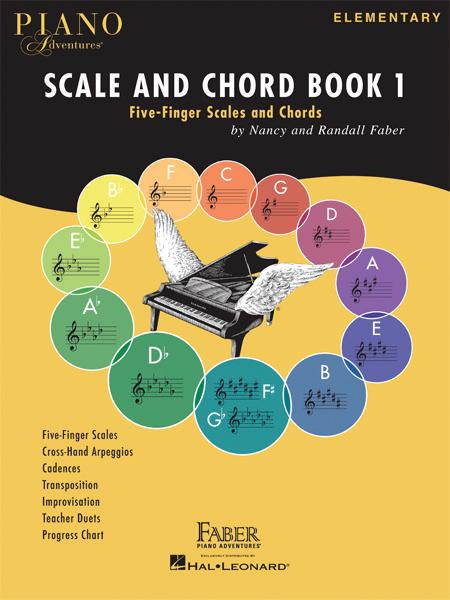

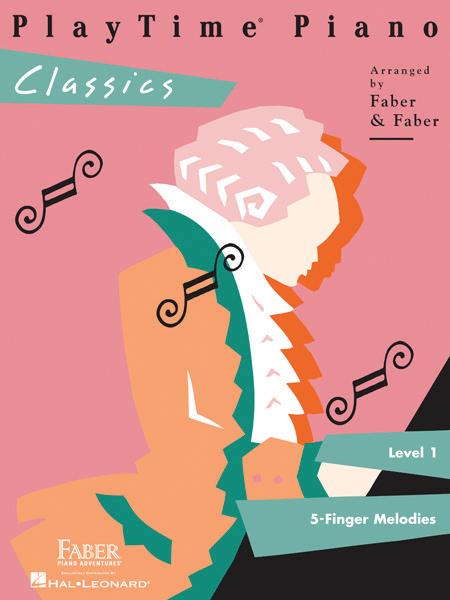

Lesson & Theory Book Book with CD

HL 00119901
HL 00119902
Technique & Performance Book
for play-along fun, see back cover
The Level 1 Technique & Performance Book focuses on a relaxed wrist and finger coordination. The four new “Technique Secrets” are Round Hand Shape, Relaxed Wrist (“wrist float-off”), Light Hand Bounce, and Finger Independence. Performance pieces feature traditional songs and etudes by composers such as Beyer, Czerny, and Gurlitt.
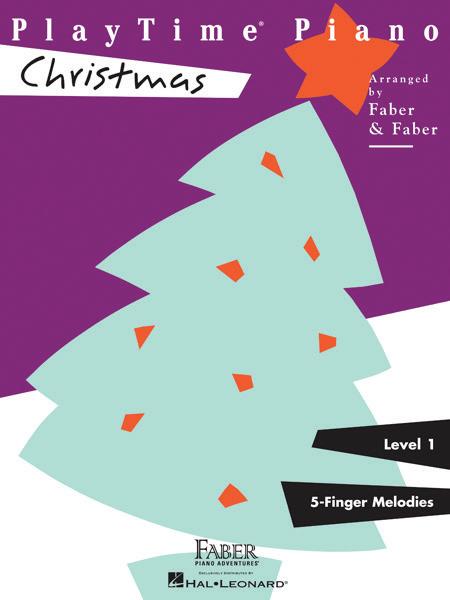
Technique & Performance Book
HL 00119903
Level 1 Concepts
Reading across the grand stave
2nd, 3rd, 4th, 5th, octave
Half steps, sharps, and flats
Tonic and dominant notes
Legato and staccato touches
Crotchet, minim, semibreve rests
C and G 5-finger scales
I and V7 chords in C and G
Explore PlayTime® Piano for Level 1 motivation and fun!


Additional Technique

LEVEL 1 PIANO ADVENTURES
See more exciting PlayTime choices on pages 14-15!
Christmas HL 00420111 Classics HL 00420127 Popular HL 00420110 Disney HL 00275427
Music from China
HL 00294517
Scale and Chord Book 1 HL 00126033
New!
6
Inside the Lesson & Theory Book…
Students are introduced to a wide variety of pianistic sounds and styles, including pieces from the great composers such as Mozart and Beethoven.
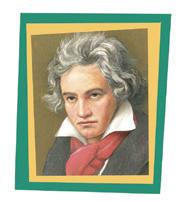
1.
Fun
Discovery questions invite students to delve deeper into the music. Creative activities encourage experimentation with sounds at the keyboard.
Inside the Technique & Performance Book…
SECRETS
Four Technique Secrets
Technique means skill. These technique secrets will help you play pieces more easily.
1. The first secret is ROUND HAND SHAPE Hand Cups Place your right hand over your kneecap. Keep that “hand shape” and s-l-o-w-l-y place your hand on the keyboard. Now do the same with your left hand Try it hands together.
2. The second secret is a RELAXED WRIST Wrist
The “Technique Secrets” develop expressive pianism— even at this early level.
Question:
*Teacher Note: The shoulder should not rise, but stay relaxed.
Carefully composed Performance Pieces allow students to shine.
New and traditional exercises provide finger development to complement the coordination of hand, wrist, and arm.
To learn more about the pedagogy at Level 1, visit pianoadventures.co.uk
11 ETUDE & ? 4 4 4 4 œ œ œ œ œ œ œ œ f-p on repeat 1 5 Moderately œ œ œ œ œ œ œ œ œ œ œ œ œ œ œ œ œ œ œ œ œ œ œ œ & ? 5 œ œ œ œ w 1 3 5 3 w œ œ œ œ 1 5 3 1 3 Œ œ œ œ œ œ œ œ 5 3 1 3 3 5 3 w w 5 1 & ? 4 4 4 4 w ˙ ˙ 1 o ? 3 F Slowly smoothly 5 on ? legato ˙ ˙ w 2 3 1 w ˙ ˙ ˙ ˙ w & ? 5 ˙ ˙ w 1 3 5 ˙ ˙ ˙ ˙ 5 4 3 2 ˙ ˙ ˙ ˙ 3 2 1 2 w w 1 3 Legato Etude Legato/Staccato Etude Ferdinand Beyer (1803-1863, Germany) Op. 101 Carl Czerny (1791-1857, Austria) Op. 599 • Play hands separately. Watch for steps and skips Play hands together. Listen for a smooth legato • Listen for a smooth legato and crisp staccatos Lesson page 20 (Classic Dance) 4
Float-off (on the closed piano lid) Set your hands in a rounded hand position. Pretend a balloon on a string is slowly pulling your wrist upward. Let your wrist rise in s-l-o-w motion until only the tip of finger 3 is touching the surface.* • Now gently return to a normal playing position. • Do 2 “wrist float-offs” with right hand, then left hand. Try it hands together.
These four Technique Secrets are used as daily warm-ups for pieces and exercises in this book. The “secrets” may be learned gradually and are highlighted in gold-coloured boxes throughout the pages. For quick and easy use, the Lesson Book also refers to each correlating Technique Book page with this icon: ? The teacher should demonstrate each “technique secret” as it is introduced. Lesson page 8 (Firefly), page 10 (Little River) 37 PERFORMANCE PIECE & ? 4 4 4 4 w RidModerately œ œ œ œ 1 on ? 5 on ? F w ing œ œ œ œ Œ œ œ # œ b a cam - el w w 5 4 3 œ œ œ œ b through the des - ert. ˙ ˙ Œ 2 & ? 5 w Won t œ œ œ œ 1 5 w you œ œ œ œ Œ œ œ # œ b come join our w w 4 3 œ œ ˙ car - a - van? w w & ? 9 Œ œ œ œ b My cam - el œ œ Œ Ó p Œ œ œ œ b is lump - y œ œ Œ Ó Œ œ œ œ This ride is œ Œ Ó g r o w i n g l o u d e r Œ œ œ œ so bump - y! œ Œ Ó & ? 13 w Ridœ œ œ œ 1 5 F w ing œ œ œ œ œ # œ œ b œ o - ver des - ert w w 4 5 3 w sand. Ó ˙ ˙ p 5 1 D This piece combines many of the musical ideas you have learned: 1. steady rhythm 2. legato and staccato 3. dynamics 4. listening Does your performance include them all? Journey by Camel Music by N. Faber Words by Crystal Bowman Can you play the right hand one octave higher? Lesson page 65 (Girl/Boy on a Bicycle) DISCOVERY 31 & œ E C A F œ œ space Treble CD line space E NEW NEW Wolfgang Amadeus Mozart (1756-1791, Austria) arranged Treble C-D-E & ? 4 4 4 4 ˙ œ ThiscomlouBrightly ˙ œ F 1 on ? 5 on ? ˙ ˙ poseter s te” ˙ ˙ œ œ œ œ name was ver - y w long. & ? 5 ˙ œ Can you ˙ œ 2 4 ˙ ˙ try it ˙ ˙ œ œ œ œ loud - ly say it w w strong! (prepare L.H.) & ? 9 Say “Jo˙ œ 3 han - nes ˙ ˙ Chrys - os˙ ˙ to - mus ˙ ˙ ˙ ˙ Wolf - gang 5 f ˙ ˙ A - ma& ? 15 ˙ ˙ de - us œ œ œ œ Mo - zart was his ˙ Œ name. wrist float-of œ œ œ Mo - zart was his p s-l-o-w-i-n-g down 2 w name.” d • Play and say these three notes. DISCOVERY What is your full name? ________________________________________________ *From Quartet in C, KV157
Names* CD 28-29 ?
TECHNIQUE
Mozart’s Five
How many sympho- nies didwrite?Beethoven ritardando means a gradual ________________________. (fill in) Ritardando is often shortened to ritard. or ______.
Facts for Mr. Beethoven
music.
Add bar lines to match the time signature. Then sightread the
I
in the boxes to harmonise each melody. Play the melodies again with the chords. 3. Can you answer these three questions? Hint: Refer to the lyrics to help you! &4 3 œ P 1 œ œ LudLudwig wig Beeis œ œ œ thoOld ven Gerwas man œ 2nd time rit. œ œ born for in “faDemous œ ˙ cemwarber rior.” &4 4 ˙ f 1 œ œ BeeWhen thohe ven com˙ ˙ played posed the he œ œ œ œ 2nd time rit. visat oat lin the and pi˙ ˙ orangan. o. &4 4 ˙ F 3 ˙ Guess One, how two, œ œ œ œ manthree, y four symfive, phosix, ˙ 2nd time rit.˙ nies seven, he eight, w wrote? nine! &4 3 œ P 1 œ œ LudLudwig wig Beeis œ œ œ thoOld ven Gerwas man œ 2nd time rit. œ œ born for in “faDemous œ ˙ cemwarber rior.” &4 4 ˙ f 1 œ œ BeeWhen thohe ven com˙ ˙ played posed the he œ œ œ œ 2nd time rit. visat oat lin the and pi˙ ˙ orangan. o. &4 4 ˙ F 3 ˙ Guess One, how two, œ œ œ œ manthree, y four symfive, phosix, ˙ 2nd time rit.˙ nies seven, he eight, w wrote? nine! Ex. ? Question: What does the name Ludwig mean? ? Question: Did Beethoven play other instruments? &4 3 œ P 1 œ œ LudLudwig wig Beeis œ œ œ thoOld ven Gerwas man œ 2nd time rit. œ œ born for in “faDemous œ ˙ cemwarber rior.” &4 4 ˙ f 1 œ œ BeeWhen thohe ven com˙ ˙ played posed the he œ œ œ œ 2nd time rit. visat oat lin the and pi˙ ˙ orangan. o. &4 4 ˙ F 3 ˙ Guess One, how two, œ œ œ œ manthree, y four symfive, phosix, ˙ 2nd time rit.˙ nies seven, he eight, w wrote? nine! ? 4 3 Cheerfully œ œ œ P 1 3 5 œ œ œ œ œ œ ? Like a march 5 œ broken chord œ œ ? 4 4 œ œ œ 1 3 5 F œ œ œ Œ rest! œ œ œ ? 5 œ œ œ œ œ œ œ œ œ Œ THEORY 78 7
2. Now write
or V7
LEVEL 2A 5-Finger Scales and Pattern Recognition
Lesson & Theory Book
Major and minor five-finger patterns are taught in Level 2A of Piano Adventures. Five-finger positions enhance reading skill by eliciting visual and aural pattern recognition, offering a context for transposition. Quavers are introduced in two-beat patterns for “chunking” of rhythms into meaningful groups. The Lesson & Theory Book includes pieces in different styles, original compositions, and traditional songs.

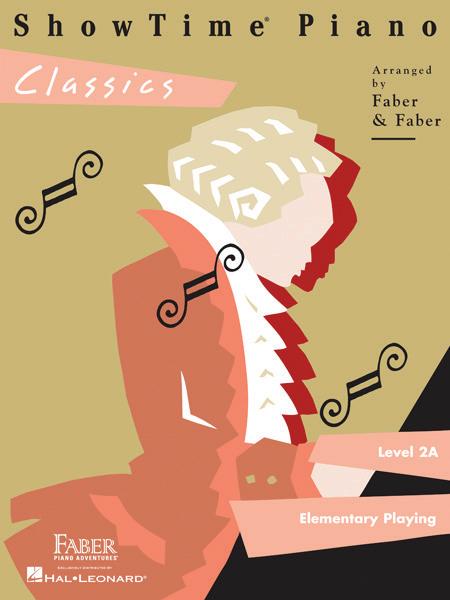



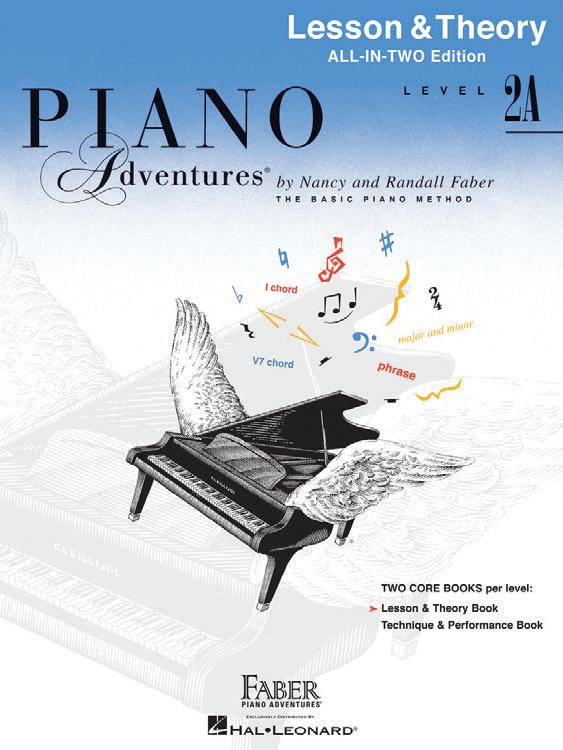
Lesson & Theory Book Book with CD HL 00119904 HL 00119905
Technique & Performance Book
for play-along fun, see back cover

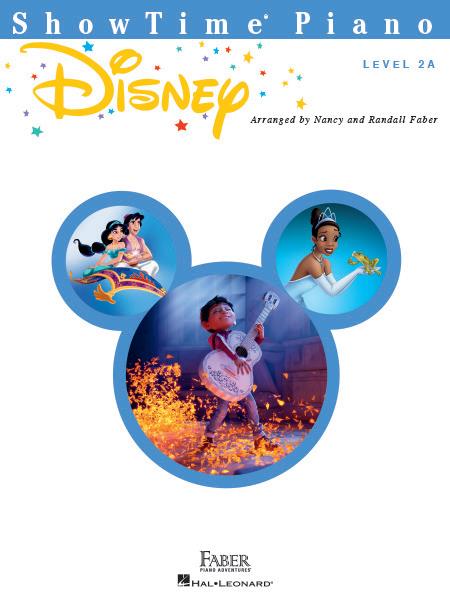
Five “Technique Secrets” open the Level 2A Technique and Performance Book: Firm Fingertips, Hands-Together Skill, Light Thumb, Fast Fingers, and a deeper study of Wrist Float-Offs. Etudes and captivating pieces, based on 5-finger scales, emphasize the development of a relaxed wrist for artistic phrasing.
Technique & Performance Book
HL 00119906
Level 2A Concepts
Quaver rhythm patterns
Crescendo and diminuendo
5-finger transposition
Level 2 Concepts
The phrase and phrase mark
Additional Technique
Whole step and the “scale formula”
Cm, Gm, Dm, Am 5-finger scales
D and A major 5-finger scales
Andante, moderato, allegro
Scale and Chord Book 1 HL 00126033

LEVEL 2A PIANO ADVENTURES
Explore ShowTime® Piano for Level 2A motivation and fun! Christmas HL 00420146 Classics HL 00420161 Popular HL 00420152 Music from China HL 00294518 Disney HL 00275428 See
exciting ShowTime
New!
more
choices on pages 14-15!
8
Inside the Lesson & Theory Book...
Quavers (Eighth Notes)
2 quavers equal a crotchet
œ œ œ
œ œ œ
Think of quavers as running notes.
Quavers are introduced as running notes, and organized in patterns.
8
4 4 œ œ œ œ œ œ ta walk tirunti ning ta walk tirunti ning œ œ œ œ œ ta walk tirunti ning ta walk ta walk
4 4 œ œ œ œ œ œ ta walk tirunti ning ta walk tirunti ning œ œ œ œ œ ta walk tirunti ning ta walk ta walk
1 2 3 4 Ex.
4 4 œ œ œ œ œ œ tirunti ning ta walk tirunti ning ta walk œ œ œ œ œ tirunti ning ta walk ta walk ta walk
4 4 œ œ œ œ œ œ tirunti ning ta walk tirunti ning ta walk œ œ œ œ œ tirunti ning ta walk ta walk ta walk
4 4 œ œ œ œ œ œ
4 4 œ œ œ œ œ œ tiruntining tirunti ning ta walk ta walk œ œ œ œ œ œ tiruntining tirunti ning ta walk ta walk
2. Circle this pattern in RHYTHM 2 above. Play on a C chord.
3. Circle this pattern in RHYTHM 3 above. Play on a G chord.
Students “investigate” whole steps and half steps.
Inside the Technique & Performance Book...
When students discover the “Secret Formula” for scales, music exploration becomes even more interesting.
A “Performance Piece” page at the end of each unit explores expressive playing.
A useful appendix of the 12 major 5-finger positions and 7 white-key minor 5-finger positions is included. The scales are organized in white and black key patterns, for easier memorization.
To learn more about the pedagogy of Level 2A, visit pianoadventures.co.uk
14 & ? 4 4 4 4 Œ œ Allegro moderato f 1 ˙ > œ œ œ œ ˙ ˙ ˙ > Ó 1 ˙ œ œ ˙ ˙ ˙ Ó 5 œ œ œ œ ˙ ˙ 2 5 1 & ? 4 œ œ œ œ œ Œ Ó Œ œ 3 1 ˙ > œ œ œ œ ˙ ˙ ˙ > Ó ˙ œ œ ˙ ˙ ˙ Ó œ œ œ # œ Ó œ œ 4 4 & ? 8 ˙ Œ ˙ œ 5 1 ˙ > œ œ œ œ ˙ ˙ ˙ > Ó ˙ œ œ ˙ ˙ ˙ Ó œ œ œ œ ˙ ˙ & ? 12 œ œ œ œ œ Œ Ó Œ œ ˙ > œ œ œ œ ˙ ˙ ˙ > Ó ˙ œ œ ˙ ˙ ˙ Ó œ œ œ # œ Ó œ œ Hunter’s Chorus from the opera Der Freischütz Lesson page 31 (The Elf’s Silver Hammer) Carl Maria von Weber (1786-1826, Germany) arranged & ? 16 ˙ Œ ˙ œ F 1 ˙ > Œ œ œ Œ 1 3 ˙ > Œ œ œ Œ œ œ œ œ œ œ ˙˙ ˙˙ p 5 4 2 & ? 20 œ œ œ œ œ œ ˙˙ ˙˙ ˙ > Œ œ œ Œ f ˙ > Œ œ œ Œ œ œ œ œ œ œ ˙˙ ˙˙ p 5 4 2 & ? 24 œ œ œ œ œ œ ˙˙ ˙˙ œ œ œ ˙ 3 F œ œ œ ˙ œ œ œ ˙ f 3 5 3 1 & ? 27 œ œ œ œ œ 3 w > U w > U 1 2 œ œ œ œ > œ > Ó œ œ œ > œ œ œ > rit. ˙ > ˙ ˙ ˙ > PERFORMANCE PIECE 42 T O N E • T O N E S E M ITONE • TONE 30 FF1746 & ? 4 4 4 4 1 f- p on repeat œ œ œ œ œ œ œ œ 5 Write your initials when memorized! œ œ œ œ œ œ œ œ your initials œ 3 œ 5 œ œ œ œ œ œ œ 3 œ 1 œ œ œ œ œ œ & ? 4 4 4 4 1 f- p on repeat œ œ œ œ œ œ œ œ 5 œ œ œ œ œ œ œ œ your initials œ 3 œ 5 œ œ œ œ œ œ 3 œ 1 œ œ œ œ œ œ & ? 4 4 4 4 1 f- p on repeat œ œ œ œ b œ œ œ œ 5 œ œ œ œ b œ œ œ œ your initials: œ 3 œ 5 œ œ œ œ œ œ œ 3 œ 1 œ œ œ œ œ œ C D E F G T T S T G Major G A B C D F Major F G A C B¯ 1 T T S T T T S T 30 FF1746 & ? 4 4 4 4 1 f- p on repeat œ œ œ œ œ œ œ œ 5 Write your initials when memorized! œ œ œ œ œ œ œ œ your initials œ 3 œ 5 œ œ œ œ œ 3 œ 1 œ œ œ œ & ? 4 4 4 4 1 f- p on repeat œ œ œ œ œ œ œ œ 5 œ œ œ œ œ œ œ œ your initials œ 3 œ 5 œ œ œ œ œ œ 3 œ 1 œ œ œ œ & ? 4 4 4 4 1 f- p on repeat œ œ œ œ b œ œ œ œ 5 œ œ œ œ b œ œ œ œ your initials: œ 3 œ 5 œ œ œ œ œ 3 œ 1 œ œ œ œ œ C D E F G T T S T G Major G A B C D F Major F G A C B¯ 1 T T S T T T S T 30 FF1746 & ? 4 4 1 f- p on repeat œ œ œ œ œ œ œ œ 5 Write your initials when memorized! œ œ œ œ œ œ œ œ your initials œ 3 œ 5 œ œ œ œ œ œ 3 œ 1 œ œ œ œ œ & ? 4 4 1 f- p on repeat œ œ œ œ œ œ œ œ 5 œ œ œ œ œ œ œ œ your initials œ 3 œ 5 œ œ œ œ œ œ 3 œ 1 œ œ œ œ œ & ? 4 4 1 f- p on repeat œ œ œ œ b œ œ œ œ 5 œ œ œ œ b œ œ œ œ your initials: œ 3 œ 5 œ œ œ œ œ œ 3 œ 1 œ œ œ œ œ C D E F G T T S T G Major G A B C D F Major F G A C B¯ 1 T T S T T T S T & ? 4 4 4 4 1 f- p on repeat œ œ œ œ œ œ œ 5 œ œ œ œ œ œ œ œ œ 3 œ 5 œ œ œ œ œ œ œ 3 œ 1 œ œ œ œ œ œ & ? 4 4 4 4 1 f- p on repeat œ œ œ œ œ œ œ œ 5 œ œ œ œ œ œ œ œ œ 3 œ 5 œ œ œ œ œ œ œ 3 œ 1 œ œ œ œ œ œ & ? 4 4 4 4 1 f- p on repeat œ œ œ œ b œ œ œ œ 5 œ œ œ œ b œ œ œ œ œ 3 œ 5 œ œ œ œ œ œ œ 3 œ 1 œ œ œ œ œ œ your initials: _____ your initials: _____ your initials: _____ C Major G Major F Major Note to Teacher: These pages present the 12 major 5-finger scales and 7 white-key minor 5-finger scales They may be taught after page 24 in the Level 2A Lesson & Theory Book, or earlier if the teacher prefers. Major 5-Finger Scales Hint: The C, G, and F major chords are all white-white-white Tone - Tone - Semitone - Tone Write your initials in each blank when you have learned and memorized these positions. REFERENCE SECTION Lesson pages 86-87 (Challenge Section)
D œ œ œ 5 UNIT “Secret” Scale Formula You already know C and G 5-finger scales. They use the tone and semitone pattern: Tone – Tone – Semitone – Tone Play and say the words above aloud. T=Tone S=Semitone Now try the “secret” formula using the G 5-finger scale DISCOVERY Which fingers play a black key? _____ What is the name of the black key? _____ ≥ The D 5-Finger Scale To find the D 5-finger scale, play and say the tone - tone - semitone - tone pattern. Notice finger 3 rests comfortably on the black key. ? 4 4 ˙ ˙ Tonic T Tone T 5 L.H. Say: ˙ ˙ S Tone T Semitone w Tone ˙ ˙ ˙ ˙˙ I V7 1 3 5 w w w I C Chord & 4 4 ˙ ˙ Tonic T Tone T R.H. 1 Say: ˙ # ˙ Tone S Semitone T w Tone ˙ ˙ ˙ # ˙˙ I V7 1 3 5 w w w # I D Chord ? 4 4 ˙ ˙ Tonic T Tone T L.H. 5 Say: ˙ # ˙ Tone S Semitone T w Tone ˙ ˙ ˙ # ˙˙ I V7 1 3 5 w w w # I D Chord ? 4 4 ˙ ˙ Tonic T Tone T 5 L.H. Say: ˙ ˙ S Tone T Semitone w Tone ˙ ˙ ˙ ˙˙ I V7 1 3 5 w w w I C Chord & 4 4 ˙ ˙ Tonic T Tone T R.H. 1 Say: ˙ # ˙ Tone S Semitone T w Tone ˙ ˙ ˙ # ˙˙ I V7 1 3 5 w w w # I D Chord ? 4 4 ˙ ˙ Tonic T Tone T L.H. 5 Say: ˙ # ˙ Tone S Semitone T w Tone ˙ ˙ ˙ # ˙˙ I V7 1 3 5 w w w # I D Chord F≥ D E G A T O N E T O N E S E M I T O NE • TONE 48 œ œ œ 4 4 œ œ œ œ œ œ ta walk tirunti ning ta walk tirunti ning œ œ œ œ œ ta walk tirunti ning ta walk ta walk 4 4 œ œ œ œ œ œ tirunti ning ta walk tirunti ning ta walk œ œ œ œ œ tirunti ning ta walk ta walk
4 4
œ œ œ œ
œ œ œ
œ œ
UNIT 1 ŒÂ Tap
Now
1. 2. 3. 1.
ta walk
œ
œ tiruntining tirunti ning ta walk ta walk
œ
tiruntining tirunti ning ta walk ta walk
and count these rhythms with your teacher.
write 1 2 3 4 under the correct beats. Your teacher will help you.
Circle this pattern in RHYTHM 1 above. Play on a G chord.
Quaver Patterns
tiruntining tirunti ning ta walk ta walk œ œ œ œ œ œ tiruntining tirunti ning ta walk ta walk = run - ning ti - ti walk ta stem beam œœ œ œ œ œ œ œ œ œ œœ œ œ œ œ œ œ œ œ œœ œ œ œ œ œ œ œ œ 10 Teacher Duet: (Student plays 1 octave higher) Semitones and Tones (Half Steps and Whole Steps) A tone is made of 2 semitones. Think of a tone as 2 keys—with one key in between. Your teacher will demonstrate. Tone Investigation Put an X on the key in between each tone shown below. Now play each tone on the piano. Our Detective Agency wh o l e • w h o l e • h alf•whole pg 36 pg 22 pg 26 ACE DETECTIVE AGENCY X ? 4 4 R.H. L.H. ˙ > œ œ œ # œ 1 F 5 3 2 Œ œ œ b œ œ Œ œ œ œ Œ œ Œ 4 4 12 Œ œ œ b Ó œ Œ œ œ œ # œ 5 Œ œ œ b œ œ Œ œ œ œ Œ œ Œ p Œ œ œ b Œ œ b œ œ Œ œ Œ & ? 4 4 4 4 œ œ b œ œ œ œ Mysteriously ∑ 1 p 2 1 œ œ b œ œ œ b œ b œ Ó 1 2 ?b 3 4 Come to us to ∑ œ œ œ b œ b f 5 & ? 4 œ œ b œ b œ ˙ solve a mys - ter - y 1 2 3 We take cas - es ∑ œ œ œ b œ b p œ œ b œ b œ ˙ of com - plex - - ty CD 34-35 ?Tech & Perf page 22 42
9
LEVEL 2B The Power of Primary Chords
Lesson & Theory Book

Level 2B provides an in-depth study of chords and harmonization in the keys of C, G, and F. Use of connected pedalling and a variety of repertoire keep the student musically engaged as they explore I, IV, and V7 chords. Styles range from jazz in Boxcar Rumble, to the exciting sounds of Spanish Caballero, and to classical themes by Bach, Beethoven, and Dvorák.
Lesson & Theory Book Book with CD HL 00131004 HL 00131005
Technique & Performance Book
for play-along fun, see back cover
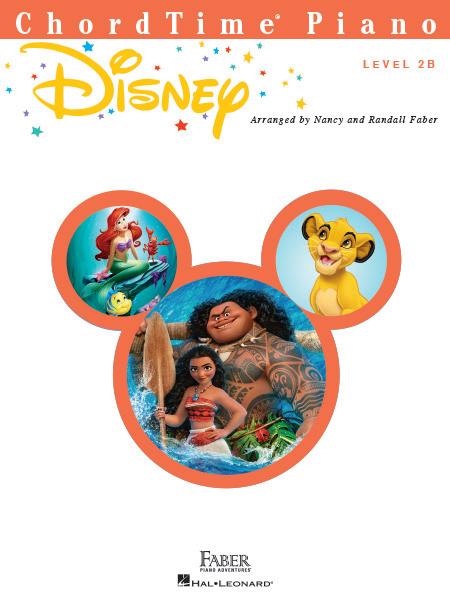
The “Technique Secret” exercises presented in this book develop a technical foundation, training the student in Arm Weight, Slur Gesture, Light Thumb, and Connected Pedalling. The Performance Pieces focus the student on forward motion, balance between the melody and harmony, articulation, pedal effects, and “musical colour.” Includes an appendix of elementary cadences.

Technique & Performance Book HL 00131006
Level 2B Concepts
Five Cs across the grand stave Musical form (AB and ABA coda)
I, IV, and V7 chords in C, G, and F Quaver rest, dotted crotchet note
Cross-hand arpeggios
C, G, and F major scales
Connected pedalling
Interval of a 6th
Explore ChordTime® Piano for Level 2B motivation and fun!
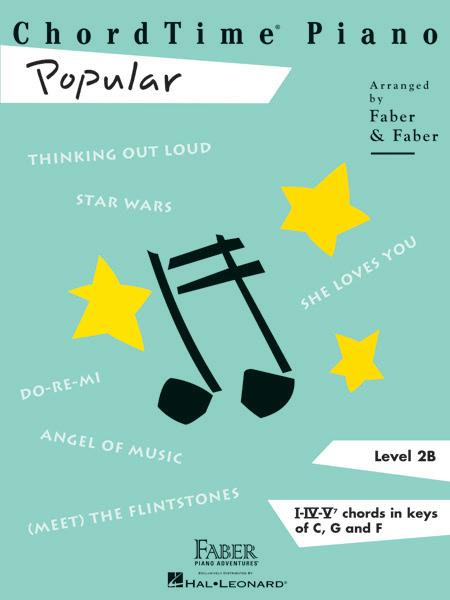



Scale and Chord Book 2 HL 00126035

New!
See more exciting ChordTime choices on pages 14-15!

LEVEL 2B PIANO ADVENTURES
Additional Technique
Christmas HL 00420114 Classics HL 00420129 Popular HL 00420113
Music from China HL 00294519 Disney HL 00275429
10
Inside the Lesson & Theory Book...
Harmonic understanding facilitates learning new pieces and leads to a more profound interpretation.

The use of connected pedalling opens a new world of more advanced expressive possibilities.
Inside the Technique & Performance Book...
The “Technique Secret” exercises presented in Level 2B develop a virtuoso technique.
Applying the “Technique Secrets” in the Performance Pieces reinforces the relationship between technique and interpretation.
The great variety of styles and fun sounds help keep students movivated.
38 Dudelsack (Bagpipes) Key of ___ Major & ? # # 4 4 4 4 œ œ œ œ ˙ ˙ ˙ ˙ 5 1 5 Allegretto f- p on repeat œ œ œ œ œ ˙ ˙ ˙ ˙ œ œ œ œ ˙ ˙ ˙ ˙ œ œ ˙ ˙ ˙ ˙ ˙ & ? # # 5 œ œ œ œ ˙ ˙ ˙ ˙ f- p on repeat œ œ œ œ ˙ ˙ ˙ ˙ œ œ œ œ œ ˙ ˙ ˙ ˙ œ œ ˙ ˙ ˙ ˙ ˙ & ? # # 4 4 4 4 œ œ œ > œ œ w w f-p on repeat 5 1 5 œ œ œ œ œ w w œ œ œ > œ œ w w œ œ œ > ˙ œ œ n ‰ j œ œ > ˙ ˙ 1 5 1 5 2 & ? # # 5 œ œ œ > œ œ w w 1 f-p on repeat œ œ œ > œ œ w w 4 2 œ œ œ œ œ w w œ œ œ > ˙ œ œ n ‰ j œ œ > ˙ ˙ Fast rock beat Unknown composer (circa 1600) original form This piece is very old written 400 years ago! The L.H. 5ths imitate the steady drone of a bagpipe. Play ƒ with a strong, energetic beat. • Repeat π as if echoing from the hills. Here is a “rock-style” arrangement of the same piece. Listen to your teacher demonstrate the piece. Imitate the rhythm you hear. Lesson pages 54-55 Pumpkin Boogie Rockin’ Bagpipes arranged by Nancy Faber & ? # # 9 œ w w 1 F & ? # # 12 œ w w 3 & ? # # 15 œ w w 2 & ? # # 18 œ œ w w P PERFORMANCE PIECE 4 & 4 3 œ œ œ 1 2 3 P œ œ œ 1 2 3 œ œ œ 1 œ œ œ 1 ? 4 3 œ œ œ 1 2 3 P œ œ œ œ 1 1. The first secret is ARM WEIGHT Exercise: Arms with Weights Move the stool away from the keyboard. Sit tall! Let your arms hang completely relaxed at your sides. Pretend you are holding heavy weights! Notice the natural curve of your hanging hands. Keep this shape and s-l-o-w-l-y lift your heavy arms. • When they are parallel to the floor, let them freely fall into your lap Repeat several times. & 4 4 œ œ œ œ Let your wrist F 1 œ œ œ œ œ Œ gent ly down and up. p? 4 4 œ œ œ œ F 1 œ œ œ œ œ Œ p R.H. Play this R.H. slur gesture in HIGHER octaves. & 4 4 œ œ œ œ Let your wrist F 1 œ œ œ œ œ Œ gent ly down and up. p? 4 4 œ œ œ œ F 1 œ œ œ œ œ Œ p L.H. • Play this L.H. slur gesture in LOWER octaves. 2. The second secret is a SLUR GESTURE Exercise: Small Wrist Lift A pianist can play several notes with a single motion. This smooth wrist motion is called a slur gesture Your wrist will rise slightly for the last notes of the slur. As you play, imagine a painter’s small, upward brush stroke. TECHNIQUE SECRETS The student should learn these four Level 2B “technique secrets” gradually. The secrets are referenced one by one in the Piano Adventures® Lesson & Theory Book. (Correlating pages are shown at the bottom of the page.) The teacher should demonstrate each “technique secret” as it is introduced. LEVEL 2B TECHNIQUE SECRETS Lesson page 6 (Moon Walker), page 7 (Almost Like a Dream) 10 Lesson page 10 (Sounds from the Fruit Drop Factory & ? 4 4 4 4 ˙ > œ > œ > ˙ > e > œ Allegro f 1 3 5 5 3 1 œ > œ Œ œ œ > œ > 3 5 3 1 P œ œ Œ œ œ ˙ 1 œ œ œ œ œ Œ & ? 5 ˙ œ > œ > ˙ œ > œ > f 1 3 5 3 œ > œ > Œ œ œ > œ Ó P œ œ Œ œ œ Ó ˙ 1 œ œ œ Œ Œ œ œ œ œ œ œ Œ 1 3 5 & ? 9 ˙ ˙ ∑ F 4 w œ œ œ œ 1 w œ œ œ œ 4 3 œ œ œ œ œ Œ ˙ Œ 3 1 & ? 13 ˙ ˙ ∑ p w œ œ œ œ œ # œ œ œ œ œ œ œ œ œ œ œ 4 1 3 ˙ œ œ œ œ ˙ ˙ Ó F & ? 17 ˙ > œ œ > ˙ > œ > œ f 1 5 œ œ > Œ œ œ > œ > P œ œ Œ œ œ ˙ 1 œ œ œ œ œ Œ & ? 21 ˙ > œ > œ > ˙ > œ œ > f œ > œ > Œ œ œ œ > P œ œ Œ œ œ ˙ œ œ œ Œ Œ œ œ œ œ œ œ œ œ 1 & ? 25 Œ œ œ œ œ œ Œ 5 p œ œ œ œ œ œ Ó œ œ œ œ œ œ œ œ œ œ œ œ œ œ œ f & ? 28 , , Grand Pause ˙ > œ > œ ˙ > œ > œ > 1 5 f œ œ œ œ œ > Œ G œ > Œ 5 2 rit. Recital Sonatina Nancy Faber slur gesture legato against staccato arm weight PERFORMANCE PIECE Music does not stand still, but has FORWARD MOTION. Keep the allegro tempo moving over the bar lines for an exciting performance!
& ? 4 3 4 3 ˙ œ œ œ œ œ (play light - ly) P 1 5 ˙ œ 3 ˙ œ œœ œœ (play light - y 4 1 2 ˙ œ œœ œœ play light - ly) & ? 5 ˙ œ œœ œœ 2 ˙ œ ˙ œ œ œ œ œ 5 5 ˙ Œ œ œ œ œ œ (prepare) & ? 9 œ œ œ F 5 œ œ œ 4 œ œ œ œ œ œ 1 4 3 1 2 3 œ œ œ œ œ œ 2 4 & ? 13 ˙ œ œ œ œ œ 3 ˙ œ œœ œœ 5 1 2 ˙ œ œ œ œ œ œ œ U Œ U Fine 5 p 1 œ U œ U Œ U Œ U 2 1 Gliding along ( Œ = 116-132) ? 4 3 œ œ œ œ œ 5 (light, 1 3 light) ? 4 3 œ œœ œœ 5 (light, 1 2 light) ? 4 3 œ œœ œœ 4 1 2 (light, light) ? 4 3 œ œ œ œ œ 5 (light, 1 3 light) ? 4 3 œ œœ œœ 5 (light, 1 2 light) ? 4 3 œ œœ œœ 4 1 2 (light, light) ? 4 3 œ œ œ œ œ 5 (light, 1 3 light) ? 4 3 œ œœ œœ 5 (light, 1 2 light) ? 4 3 œ œœ œœ 4 1 2 (light, light) The Waltz Chord Pattern — Play each example four times as a daily warm-up. The Ice Skaters* I Chord V7 Chord V7 Chord Émile Waldteufel (1837-1915, France) arranged * original French title Les Patineurs CD 24-25 ?Tech & Perf pages 23-25 & ? 17 œ œ œ œ œ œ ˙ ˙ ˙ 1 p 4 2 4 1 4 On the repeat, play R.H. √ HIGHER. œ œ œ œ œ œ ˙ ˙ ˙ 2 1 2 œ œ œ (play light - ly Œ œœ œœ 1 3 œ œ œ play light - ly) Œ œœ œœ & ? 21 œ œ œ œ œ œ ˙˙ 1 P 5 2 5 1 5 œ œ œ œ œ œ ˙˙ 2 1 2 œ œ œ (play light - ly Œ œ œ œ œ 1 4 œ œ œ play light - ly) Œ œ œ œ œ & ? 25 œ œ œ œ œ œ ˙ ˙ ˙ 1 4 2 1 œ œ œ œ œ œ ˙ ˙ ˙ 2 1 2 œ œ œ Œ œœ œœ 3 œ œ œ Œ œœ œœ & ? 29 œ œ œ œ œ œ 3 F ˙ Œ œ œ # # œ œ 2 4 œ œ œ œ œ œ rit. œ œ œ ˙˙ n D.C. al Fine 1 2 32
& ? 4 3 4 3 œ œ œ œ œ œ P 5 3 1 1 œ œ œ œ œ œ 3 5 5 ! 2 1 1 & ? 3 œ œ œ œ œ œ 5 ! L.H. J œ œ œ œ œ œ F 5 R.H. 3 1 1 2 & ? 5 œ œ œ œ œ œ 4 P 4 ! 2 1 1 œ œ œ œ œ œ 5 ! 1 Gliding smoothly ( Œ = 76-88) Canoeing in the Moonlight Key of _____ Major New Dynamic Sign Pianissimo means very soft, softer than piano In this piece, the notes of the I IV, and V7 chords are played as broken chords Combining broken chords with pedal creates a peaceful, rippling sound on the piano. Trace the key signature for each line of this piece. CD 54-55 ?Tech & Perf pages 46-47 π pianissimo 76
learn more about
pedagogy
11
To
the
of Level 2B, visit pianoadventures.co.uk
More Method Books for All Ages
My First Piano Adventure®
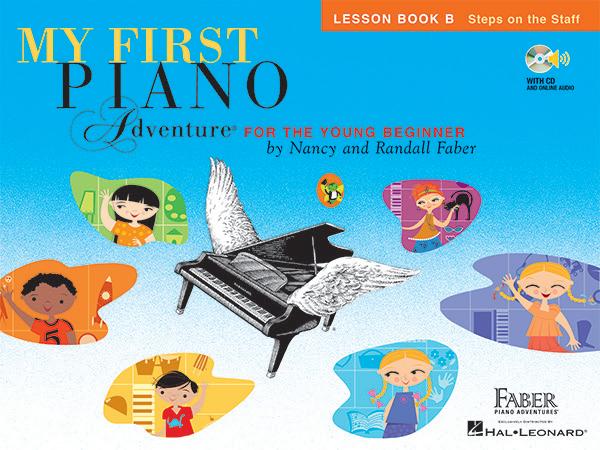






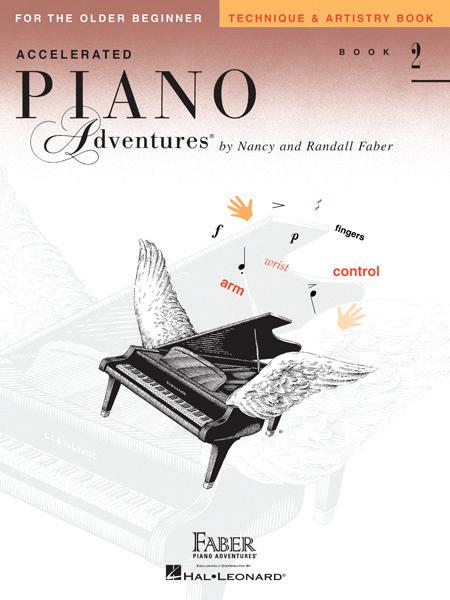


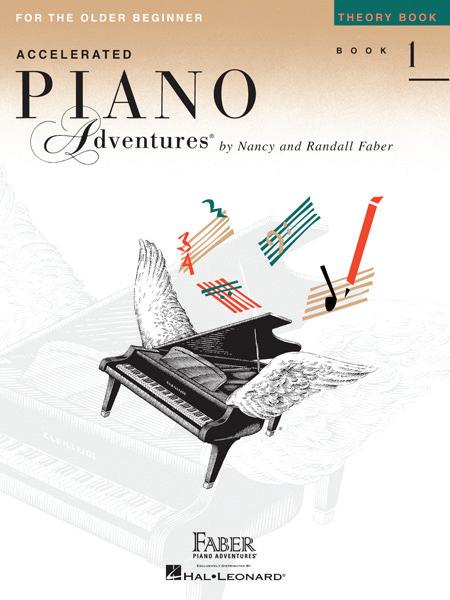

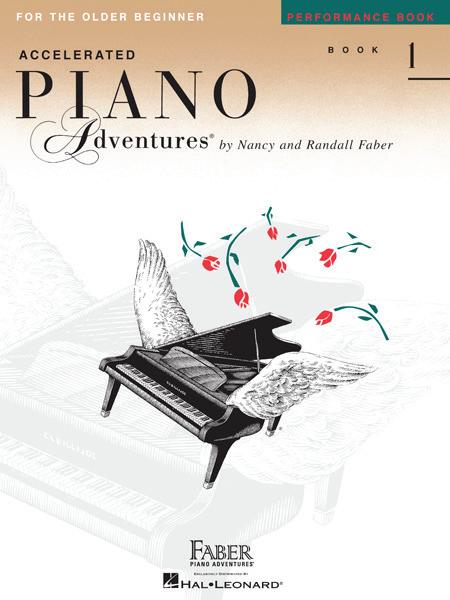
For young beginners ages 5-6
Music lessons for the young are activity-based and full of play. Five delightful “friends at the piano” engage the student with fun songs, rhythm games, and technique activities. These develop a foundation of aural perception, physical coordination, and eye-tracking for note reading. An adventure for student, teacher, and parent!

Book A introduces basic rhythms, note names, and pre-reading songs.
Book B introduces staff reading while focusing on reading by steps.
In Book C, students learn to read by skips, with pieces written in the C and G 5-finger scales.
Each Lesson Book includes a full album of audio tracks with online access, offering a unique listening experience for practice or play-along. With outstanding orchestrations, the recordings demonstrate a key principle of the course: when children listen, sing, tap, and move, they play more musically!
Accelerated Piano Adventures®

For ages 11 and up
For pacing and appeal, the accelerated course is ideal for beginners starting at 11 years of age and up. Four core books per level smoothly correlate to develop key musical skills.
Compared to the basic method, Accelerated Book 1 combines the concepts of the Primer and Level 1. Accelerated Book 2 covers topics introduced in basic Level 2A and 2B. Nearly 75% of the music is unique so that a sibling can also be in Piano Adventures, yet have a unique book of his or her own.
Lesson Book 1 HL 00420308
Theory HL 00420309
Technique & Artistry HL 00420250
Performance HL 00420229
Enjoy fun repertoire!
Accelerated Book 1 spans PlayTime and ShowTime.
Lesson Book 2 HL 00420310
Theory HL 00420253
Technique & Artistry HL 00420265
Performance HL 00420232
More to explore!
Accelerated Book 2 spans ShowTime and ChordTime.
PIANO ADVENTURES FOR ALL AGES
Lesson Book A HL 00420259 Writing Book A HL 00420260
Lesson Book B HL 00420261 Writing Book B HL 00420262
Lesson Book C HL 00420263 Writing Book C HL 00420264
18
Adult Piano Adventures® For adult students



Adult Piano Adventures enables the adult beginner to play music for pleasure while developing musical understanding. Combining lessons, technique, and theory in a single volume, the “All-In-One” method books are both comprehensive and convenient. Through a logical and effective approach to note-reading, students gain the basic skills to play hundreds of classic and popular melodies from around the world.
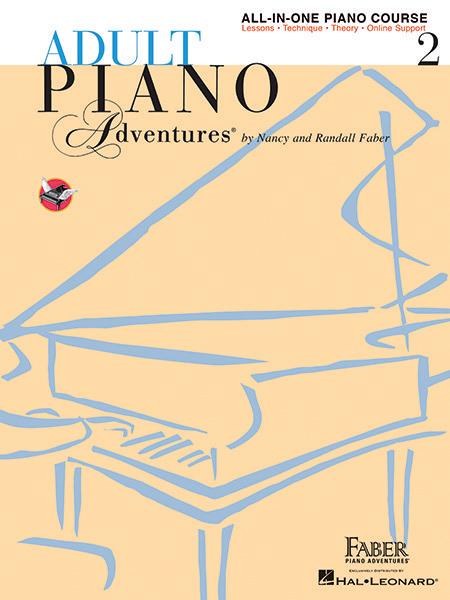

All-in-One Course Book 1
HL 00420242
All-in-One Course Book 2
HL 00420246
Online support included, with hours of instructional videos and audio accompaniment tracks for rhythmic vitality and artistic expression!
A collection of new supplementary repertoire books provide hours of enjoyment for extended learning and fun. Students can play beloved classics, popular treasures and seasonal favorites in six new books arranged at just the right level for adult beginners, and for those returning to the keyboard.


Popular Book 1
HL 00159073
Classics Book 1
HL 00159072
About the Fabers
Christmas Book 1
HL 00420248
Popular Book 2
HL 00198963
Classics Book 2

HL 00198962
Christmas Book 2
HL 00420249
Nancy and Randall Faber have combined their backgrounds as composer and performer to become leading supporters of piano teachers and students. The husband and wife team has authored over 300 publications, including the Piano Adventures method, which received the MTNA Frances Clark Piano Pedagogy Award in 2018.

Nancy Faber was named Distinguished Composer of the Year by the Music Teachers National Association. Her flute quartet “Voices from Between Worlds” was the winning composition for the National Flute Association’s Professional Chamber Music Competition. She was commissioned by The Music Teachers National Association for its Year of Collaborative Music. Ms. Faber’s music has been heard on network television, public radio, and in piano recitals of teachers around the world. Piano studies were at the Eastman School and Michigan State University, where she was honored with the Distinguished Alumni Award in 2015.
Randall Faber has performed extensively as a classical pianist and has lectured on musical artistry and talent development around the world. A Steinway Artist, his performances have aired on international television and public radio. Randall holds three degrees from the University of Michigan and a Ph.D. in education and human development from Vanderbilt University. In 2019, Dr. Faber received the Lifetime Achievement Award in Education from the Roland Corporation.
The Fabers advocate piano study not only for personal expression and performance success, but also as a vehicle for the student’s creative, cognitive, and personal development. Their philosophy is reflected in their writing, their public appearances, and in their own teaching.
19
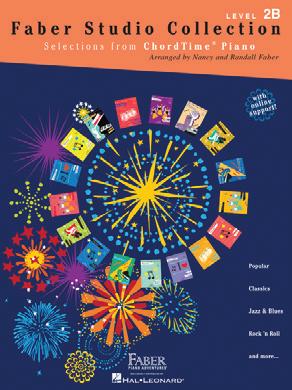

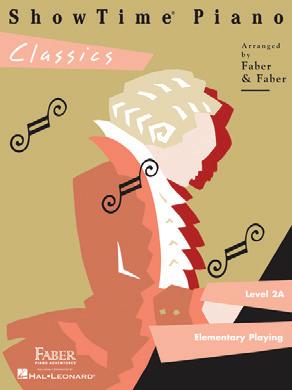


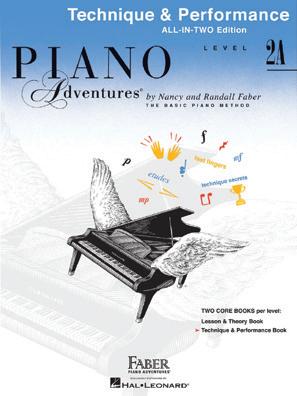














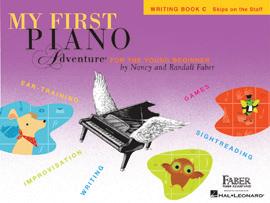





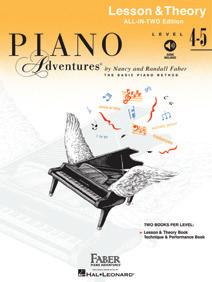






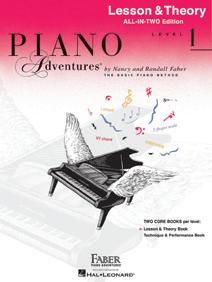
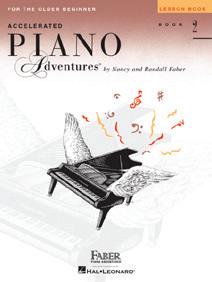





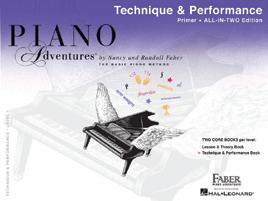


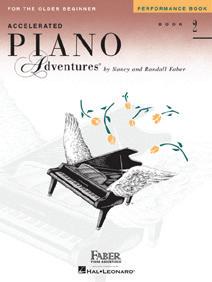



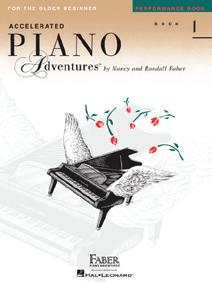





































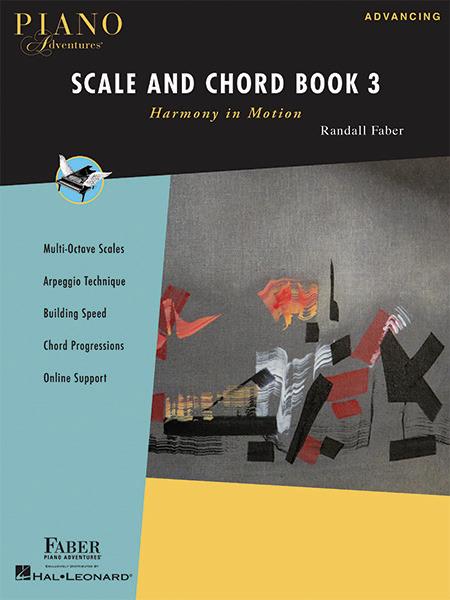

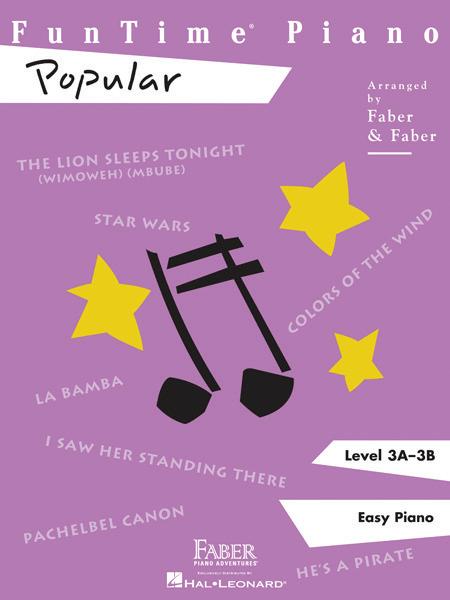


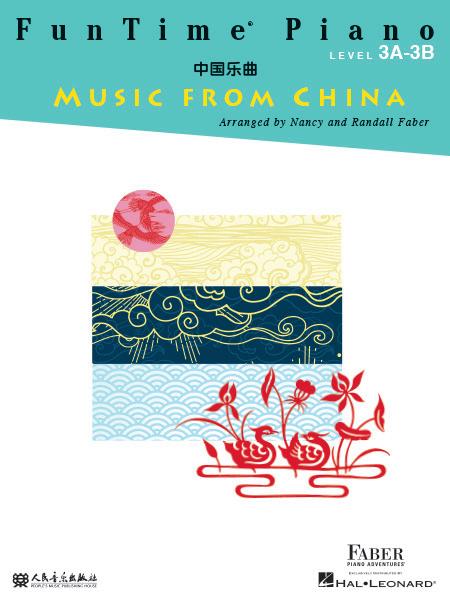




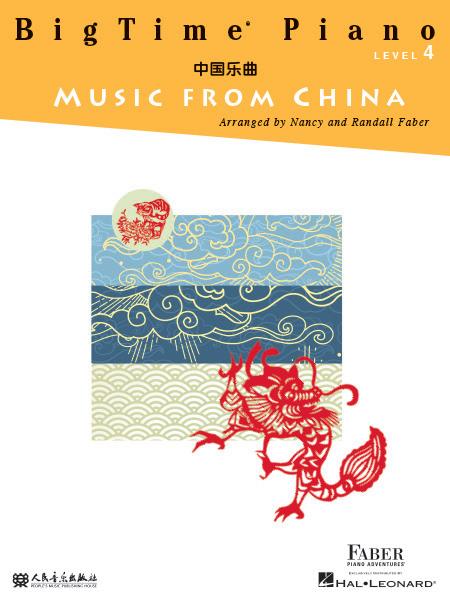
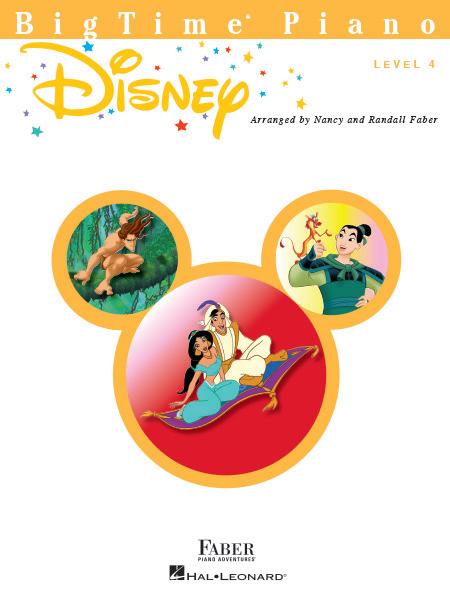



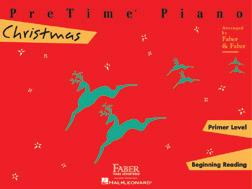
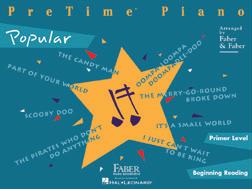










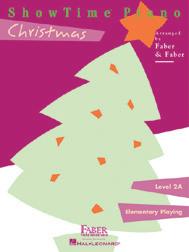




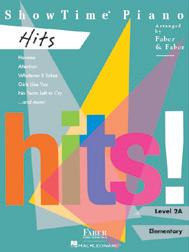

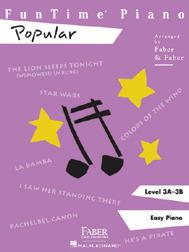
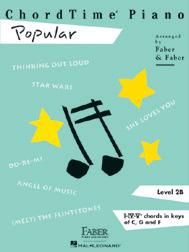


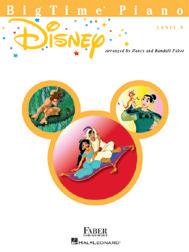
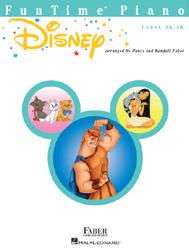





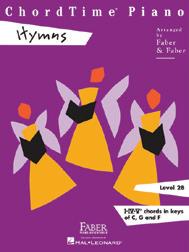
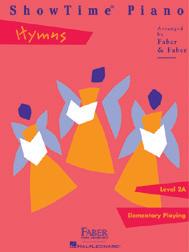
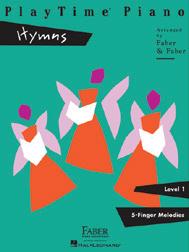


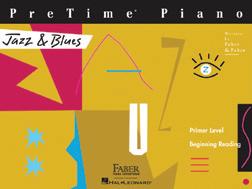
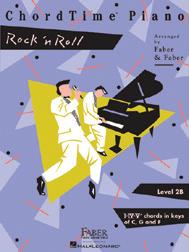








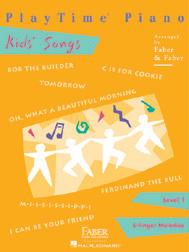
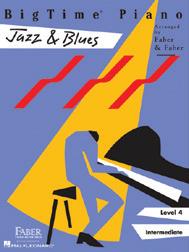







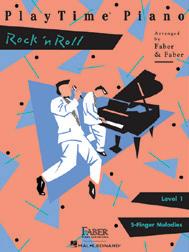



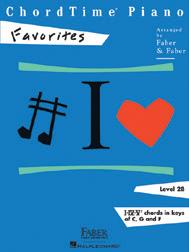


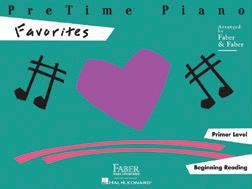






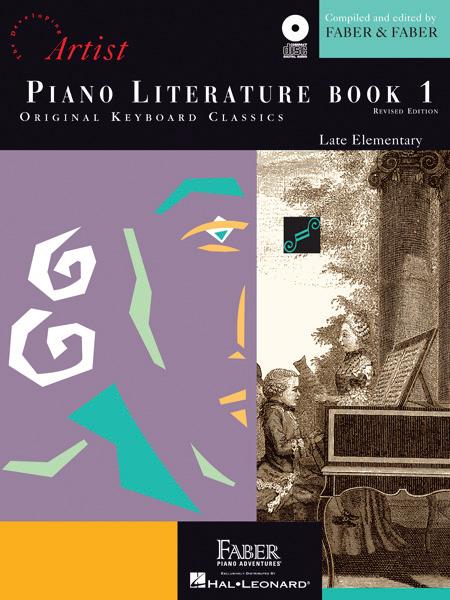
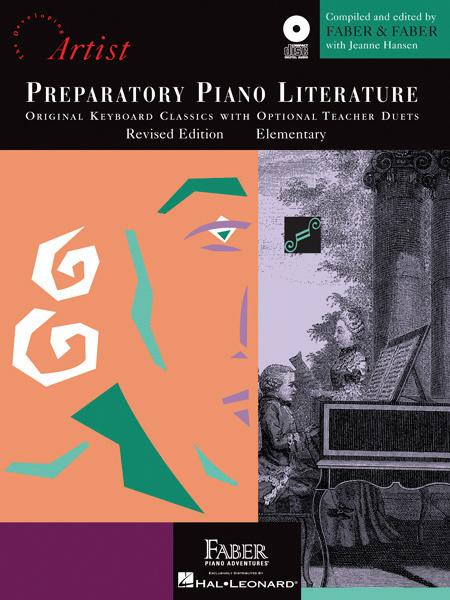






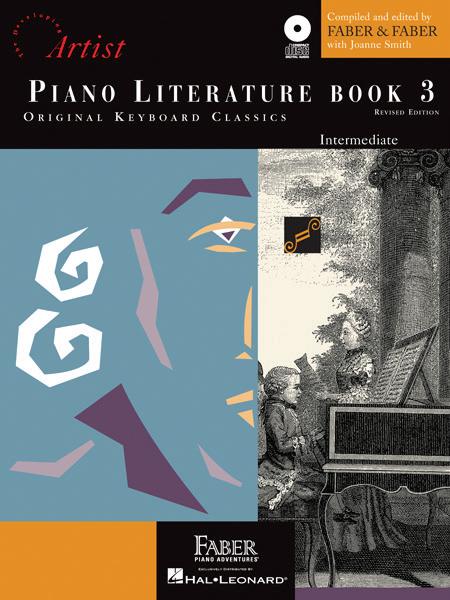



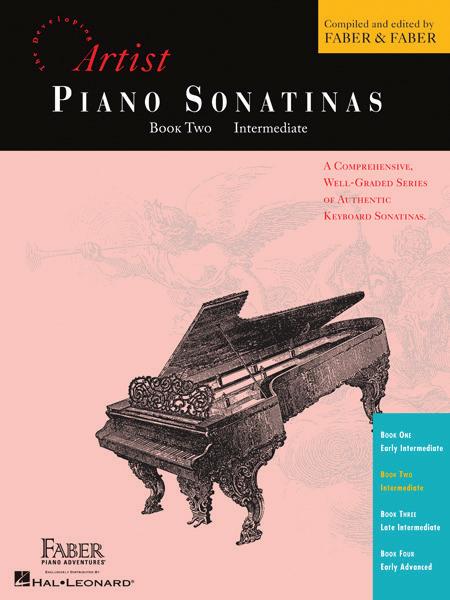 Level 4 Level 5
WORDS from the MASTERS
Carl Czerny, teacher of the great composer Franz Liszt
Paired with each piece is a famous classic poem to inspire artistry at the keyboard.
Level 4 Level 5
WORDS from the MASTERS
Carl Czerny, teacher of the great composer Franz Liszt
Paired with each piece is a famous classic poem to inspire artistry at the keyboard.


























